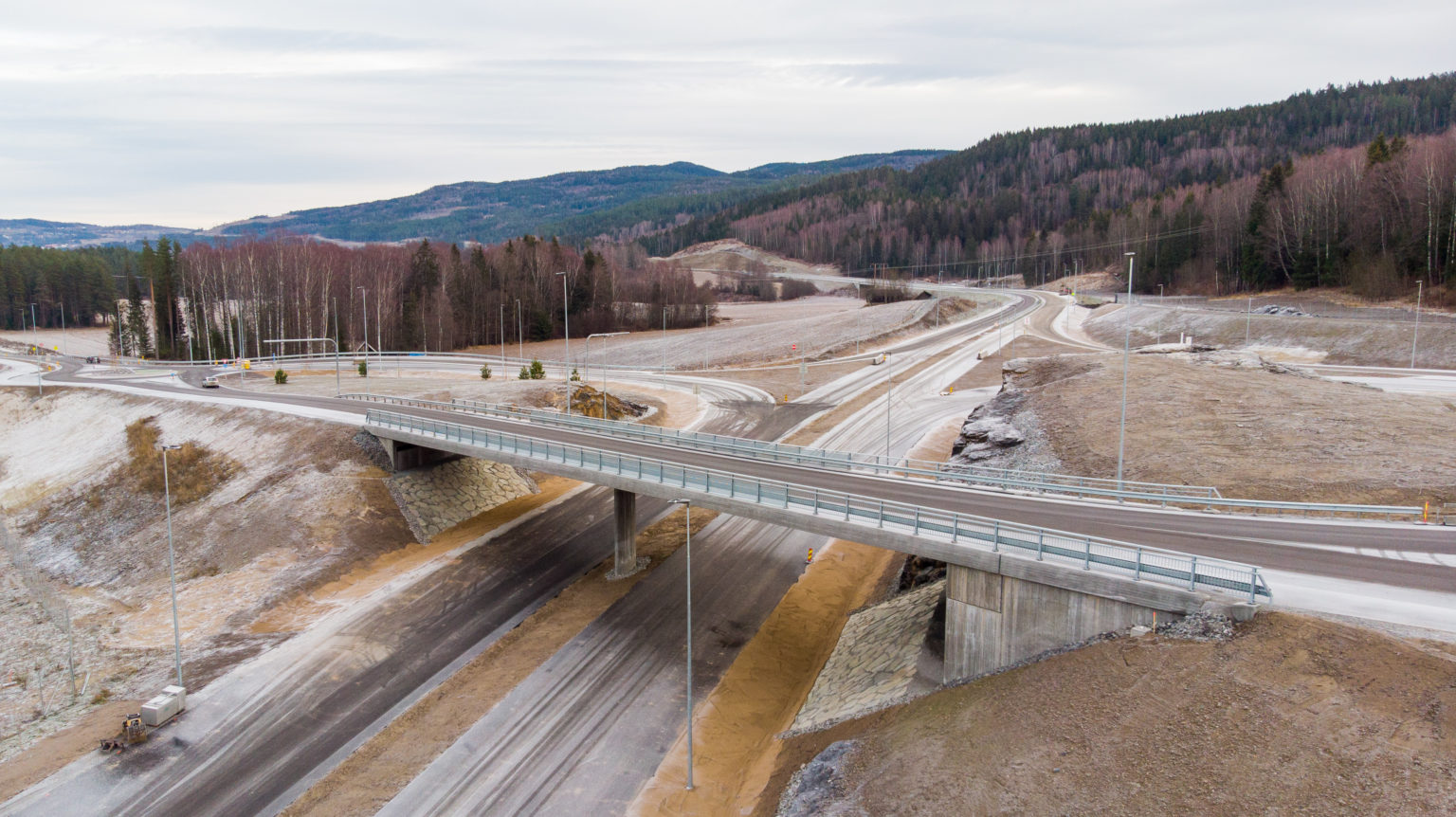New E16 road in Norway gets BREEAM Infrastructure rating of Very Good
Overview

The E02 Åsbygda-Olum project was a commissioned by The Norwegian Public Roads Administration. The project was opened for traffic on December 21st 2021, six months ahead of schedule. Praised for its sustainable practices, the works was acknowledged with a BREEAM Infrastructure (formerly CEEQUAL) rating of Very Good.
About
The Norwegian Public Roads Administration is the government agency responsible for national and county public roads in Norway.
Background
The E02 Åsbygda-Olum project involved building 10.4km of new highway on the E16, including central crash barrier and overtaking lanes. The new section of the highway also needed to navigate 1km of county road, 4.6km of forest road and operating route, as well as emergency areas alongside the road. Building and construction of two large grade-separated junction areas was also required. The goal of the project was to improve the E16 for all road users.

Challenges
A significant challenge for the project was that all access routes to the project were through densely inhabited areas. This represented a significant risk with respect to conflicts between man and machine, but also HSE in general.
Through close collaboration with the client and the local community, the team established a plan for information as well as physical barriers to secure the traffic from the civil works. As an example, the project allocated resources, as traffic guards, during school hours in periods with planned heavy traffic and zero incidents occurred.
The main driver of the project was to secure a common framework with transparent communication and documentation, as well as generating an environment for the project the provide a strong focus on climate, environment and sustainability.

Solutions
Building and construction
Two large grade-separated junction areas and a total of 15 bridge constructions were created along the new E16. A total of 11 concrete constructions and four wooden bridges was also part of the project.
The earthworks included handling of 1 million m3 of bedrock, 300 000 m3 Soil as well as ca. 32 000 m3 of potential acid producing black shales (alum shale). The project included 19 000 m3 of concrete used in construction and 160 000 m2 of asphalt works. Open ditch-drainage through infiltration, as well as LED streetlights, were built and installed along the entire project.
Land contamination and remediation
Detailed excavation plans reduced the volume of potentially acid producing black shale (alum shale) from the project. There was also a plan for surface water handling to avoid future run-off water getting in contact with exposed black shales.
Communities and stakeholders
In collaboration with the client, the project maintained excellent communication with neighbours. This secured the possibility of restoring farmland outside the original scope of the contract.

Benefits
Sustainable resourcing highlights
- 39% reduction in embodied carbon emissions
- 99,9% of excavated materials were used
- 99.2 % of total waste diverted from the landfill
- Reduced volumes and bespoke, CO2 reduced, recipes for concrete and asphalt.
- Use of System-formworks for concrete constructions significantly reduced the amount of wood waste from the project.
- Optimised the earthworks to secure 100% utilisation of all masses and fractions in the project.
Motivated by the BREEAM Infrastructure scheme, the project carefully planned the excavation of potential acid producing black shales (alum shale). The resulting plan and implemented excavation techniques reduced the volume of hazardous rock to special landfill by nearly 30%.
In addition to reducing carbon emissions related to transport, shielding the local society of heavy transport and securing optimised utilisation of local geological resources, this also resulted in significant cost reductions related to landfill tax and transportation cost. The project team estimated that the total sum of all BREEAM Infrastructure related savings amounted to 5% of the original contract (ca. 1.1 billion NOK).
In general, securing full utilisation of all geo-resources in the project, reduced cost for purchasing produced rock products, gravel, soil and other earthwork materials. Planning for temporary construction roads as part of the final constructions saved time and cost.
Speaking on the impact of BREEAM Infrastructure to the works, Ole-Petter Jensen, a project manager, shared, “BREEAM Infrastructure enabled us, as entrepreneurs, to fully unlock our creative potential and evaluate and implement our most innovative solutions in the project. The projects handling of the potential acid producing black shale is a true example of this. BREEAM Infrastructure provides a solid framework for delivering on Skanska’s vision: Building for a better Society.”
Another project manager, Pål Steinar Karlsen, echoed these sentiments, “The E16 E02 Åsbygda-Olum project, was this local organisations first encounter with BREEAM Infrastructure. The use of this Sustainability scheme for Civil construction projects has been an interesting learning process and left us with highly valuable knowledge on how we as a public authority can improve on sustainability in our future projects.”
They continued, “Understanding how key strategic decision made in the planning and tendering process affect the sustainability potential in the project execution has been eye-opening to us. Further, we have learned that by actively supporting, collaborating and challenging our supplier, we can make a positive and more sustainable impact not only in the project, but also for the surrounding environment and people.”

